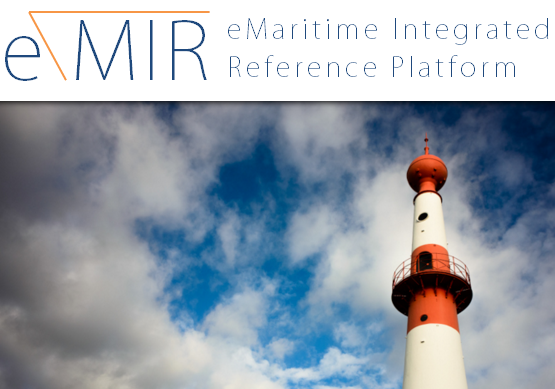Axel Hahn |

he reseach platform eMIR is a step forward making maritime systems safe and dependable. Assigned to the Research Center for Critical Systems Engineering at the University of Oldenburg and the Research Institute OFFIS, eMIR is an open test bed in the German Bight. Open means that eMIR understands itself as an element of the world wide efforts to provide test beds for maritime systems like e-Navigation, shipping, or platforms for environmental monitoring.
eMIR is intended to support efforts to implement next generations e-Navigation and intelligent shipping technologies for organizations like IALA and IMO. It will offer research, development, testing, and demonstration services for both industry and academia.
eMIR will support a physical test bed in the south east German Bight in the vicinity the Jade, Weser and Elbe approach and the harbours of Jade Weser Port, Bremerhaven and Cuxhaven. It will be accompanied by a co-simulation system with installations in Elsfleth and Oldenburg in combination with third party simulator installations.
eMIR implements a service oriented approach. It will offer services used to explore new technical solutions, human centered design, verification and validation, demonstration and environmental monitoring. First services under design are:
- Reference Waterway Jade/Weser/Elbe approach
- Reference Offshore Wind Park
- Research Harbour
- Ship to Ship and Ship to Shore Communication
- Traffic Simulation
- Bridge Simulation
- Heavy Lift Simulation
- Environmental Simulation
- Environmental Monitoring
- Vessel Traffic Services (VTS) System
- Information/data management
- Effective and robust voice communication and data transfer
- Systems and equipment
- Ship reporting
- Traffic monitoring; and/or
- Training and familiarization
| Organisation |
|---|
OFFIS |
University of Oldenburg |
SIGNALIS GmbH |
Raytheon Anschütz GmbH |
All public outcomes about technology evaluation and hmi / usability analysis will be published on the eMIR web page.
The physical elements of eMIR cover
- VTS installation
- A portable Integrated Bridge System
- Sensors along the waterways and in the research harbors for traffic and environment monitoring
- Communication backbone
- A set of NaviBoxes, ready to run navigation and surveillance sensors to be used for bridge/e-Nav experiments
- Odysseus Sensor Fusion System
The In Situ testbed is accompanied by a co-simulation system including a
- Traffic Simulation for waterways
- nBody Simulation for operations
- VTS Simulation
- Radar Simulation
- Modeling tools
Interoperability is ensured by using a HLA based backbone and HAGGIS semantic data model. The simulation platform will be extended by
- Bridge Simulator (Jade Hochschule)
- Heavy Lift Simulation (Mariko) and usage of
- Enviromental Models and Simulations (BSH)
- Research Harbour Rostock
First outcome of test bed setup is the identification of the need to address e-Navigation as a safety critical sociotechnical system.
eMIR is planned as an open and integrative e-Navigation testbed. We suggest to share services with other registered testbeds to push e-Navigation implementation.
